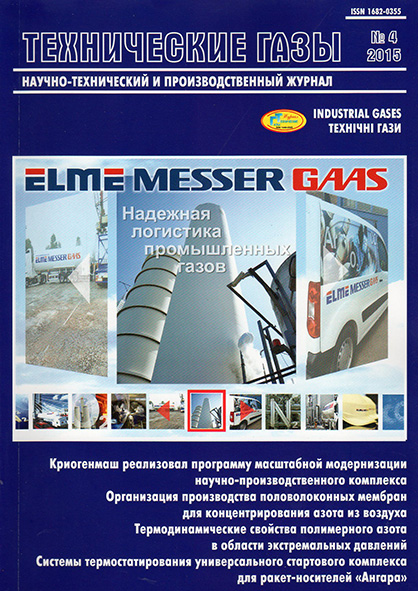CALCULATION PROCEDURE OF THE MAIN PARAMETERS OF LONG LENGTH HTS LEVEL GAUGES
DOI:
https://doi.org/10.18198/j.ind.gases.2015.0784Keywords:
high-temperature superconductor (HTS), thermo resistive level gauge of cryogenic products, secondary instrument-level gauge, level gauge, hts sensor, dewar vessel, liquid nitrogen, calculation of heating timeAbstract
Many industries widely apply different technologies using liquid cryogenic products. In this context, diagnosis of the state, control and measurement of liquid and vapor-liquid cryogenic media remains relevant. Development of devices for liquid level control in cryogenic tanks holds a special place. Progress in the production of high-temperature superconductors (HTS) has created prerequisites for the development of simple and convenient sensors of a new type to measure the level of cryogenic liquids. The physical and mathematical model of an HTS sensor is developed based on the differential equation of the transient heat conduction in the body of a long length conductor taking into account the internal ohmic heat generation and heat transfer on its surface separately with the liquid and vapor phases of the cooling agent in a laboratory Dewar vessel. A calculation procedure for the main parameters of the HTS sensor convenient for practical calculations is created. On the basis of the numerical solution of the differential equation, dependences of overheating the sensor with respect to the temperature of the liquid on the current passing through it for commercially manufactured HTS conductors of the first generation Bi 2223 and Bi 2212 are plotted.
Downloads
Issue
Section
License
LICENSE AGREEMENT
After receiving an article for publication as required revision scientometric databases each author directs the license agreement on the assignment and transfer of the management of copyright. Signatures of the author (s) it is desirable to seal the personnel department of the institution where the author works (authors), or the seal of the Faculty.
Revision refers to the authors one layout for proofreading. Permissible only those fixes that result in compliance with the layout of the original text of the article. Significant changes are not permitted. Layout should be sent to the editorial office within days of receipt.

